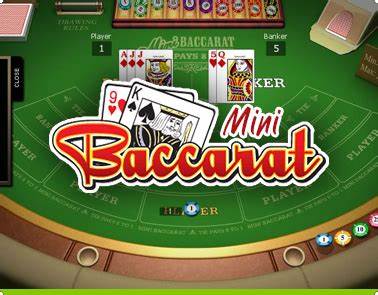Discover PNXBet Baccarat in WinPH for an Unmatched Gaming Experience
Baccarat: A Comprehensive Analysis of Game Rules, Card Values, and Strategic Implications


Abstract
This article provides a comprehensive academic analysis of baccarat, focusing on its game rules, card values, dealing procedures, and betting strategies as defined in the official document provided by the Tasmanian Treasury. Emphasizing key concepts such as baccarat rules, hand scoring, third card rule, and house edge, the study explores the mathematical and procedural foundations of baccarat, highlighting its relevance in modern casino gaming. The analysis underscores the importance of understanding baccarat's rules for strategic wagering and efficient gameplay.
Introduction
Baccarat is a well-established casino game known for its simplicity, elegance, and low house edge. The formal rules governing baccarat, as documented by the Tasmanian Treasury, serve as the cornerstone for both traditional and digital implementations of the game. This article provides a detailed examination of the rules of baccarat, including card values, hand scoring methods, dealing procedures, and betting options. Key keywords such as baccarat rules, card values, hand scoring, third card rule, casino game, and house edge are integral to this analysis. The study aims to elucidate the underlying mechanics of baccarat and offer insights into its strategic applications in the realm of online and offline gambling.
Game Rules and Structure
Basic Game Overview
Baccarat is typically played between two hands: the Player and the Banker. The objective of the game is to bet on the hand that will have a total value closest to nine. In addition to the Player and Banker bets, a Tie option is also available, though it generally carries a higher house edge. The simplicity of baccarat rules contributes to its enduring popularity among casino enthusiasts.
Card Values and Scoring
A fundamental aspect of baccarat is its unique method for assigning card values and calculating the hand scoring:
Aces are assigned a value of one.
Cards 2 through 9 are valued at their face value.
Tens and face cards (Jacks, Queens, and Kings) are assigned a value of zero. The total value of a hand is determined by summing the values of the individual cards and then using only the unit digit of the sum. For example, a hand with a total of 14 is scored as 4. This method of scoring is essential for understanding the mathematical framework of baccarat and is critical for determining the outcome of each bet.
Dealing Procedures and the Third Card Rule
The dealing process in baccarat follows a standardized protocol:
Initial Deal: Two cards are dealt to both the Player and the Banker.
Third Card Rule: If neither hand achieves a 'natural' (a total of 8 or 9) from the initial deal, additional cards may be drawn based on specific rules. The third card rule is applied differently for the Player and Banker, with the outcome determined by the initial totals. This procedural rule ensures that the game maintains a balance of chance and strategic play, and it is a defining characteristic of baccarat.
Betting Options and Strategic Considerations
Betting Choices
Baccarat offers three primary betting options:
Player Bet: Wagering on the Player's hand to win.
Banker Bet: Wagering on the Banker’s hand, which statistically offers a lower house edge despite a commission on winnings.
Tie Bet: Betting on a tie between the Player and Banker hands, a less favorable option due to its higher house edge. The selection of betting options is crucial for strategic wagering, as understanding the inherent odds associated with each bet can significantly influence the long-term profitability of the game.
House Edge and Strategic Implications
The concept of house edge is central to baccarat. The Banker bet typically offers the lowest house edge, making it a preferred choice among strategic players. Understanding the house edge is essential for managing risk and implementing effective betting strategies in both digital and traditional casino environments.
Technological Integration and Modern Applications
With the advent of online gambling, the traditional rules of baccarat have been integrated into digital platforms. Modern implementations maintain the core principles of baccarat while leveraging advanced technology to enhance user experience:
Digital Platforms: Online casinos employ secure digital systems to replicate the live casino environment, including the use of high-definition graphics and real-time streaming.
Mobile Optimization: Modern baccarat platforms are optimized for mobile devices, ensuring accessibility and seamless gameplay.
Interactive Features: Digital implementations often incorporate interactive elements that facilitate real-time decision-making and enhance strategic engagement.
Conclusion
Baccarat remains a quintessential casino game due to its straightforward rules, low house edge, and balanced interplay between chance and strategy. This academic analysis highlights the fundamental components of baccarat, including card values, hand scoring, dealing procedures, and betting options, as outlined in the official document by the Tasmanian Treasury. By understanding these core elements, players can develop more effective wagering strategies and appreciate the mathematical precision underlying the game. The integration of these principles into modern digital platforms further underscores baccarat's enduring relevance in the realm of online gaming.



